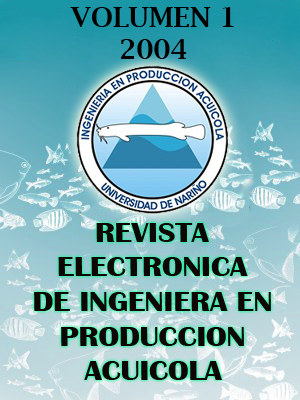CAMBIOS OCURRIDOS EN LOS ULTIMOS 10 AÑOS EN LA PRODUCCIÓN PESQUERA DE LA ECORREGIÓN CIÉNAGA GRANDE DE SANTA MARTA (CGSM)
Resumen
La ecorregión Ciénaga Grande de Santa Marta (CGSM) es el sistema lagunar costero más
importante de Colombia y de la cuenca Caribeña. Este ecosistema ha sido objeto de numerosos
estudios, destacándose el interés dirigido a la rehabilitación del ecosistema, deteriorado a causa,
entre otras, de la alteración antropogénica de los flujos de agua dulce y marina. Este impacto se
reflejó en el deterioro de la calidad del agua, la disminución del bosque de manglar y de los
recursos pesqueros. Como parte importante a la solución de este problema, se reestablecieron los
flujos de agua dulce provenientes del río Magdalena entre 1996 y 1998. Antes y después de estas
reaperturas se ha desarrollado un monitoreo de las condiciones ambientales y los cambios
estructurales de las comunidades vegetales y en este caso de los recursos pesqueros en los
principales sitios de actividad pesquera. Con la ayuda de un sistema de información pesquera, se
estimó la captura, el esfuerzo, la CPUE, y la renta económica por unidad económica de pesca. En
CGSM se han explotado al rededor 85 especies de peces, 9 de crustáceos y 4 de moluscos. La
comparación entre el escenario anterior (1994-1996) y posterior (1999-2004) a la reapertura de
los caños, indicó que las capturas e ingresos económicos de la pesca, los cuales mostraban
tendencia a la disminución hasta 1996 ( 9269- 8275- 4742 ton), aumentaron considerablemente
en el corto plazo durante 1999 (4 meses)-2000 (4383- 8425 ton). Sin embargo, entre 2001-2002,
las mismas variables, mostraron una disminución a niveles inferiores al periodo anterior a las
obras hidráulicas (4223 – 4237 ton), con tendencia creciente nuevamente en el 2003 (5362 ton).
Un análisis más detallado con base en el monitoreo, permitió establecer que las condiciones
ambientales en las aguas del sistema ligadas al cambio climático global, influyeron en la
abundancia y composición por especies de los recursos pesqueros de la CGSM. En efecto, las
comparaciones de las capturas estuvieron asociadas a cambios en la salinidad, siendo ésta uno de
los factores indicadores del funcionamiento del sistema.
Palabras clave: Ciénaga Grande de Santa Marta, laguna costera, recursos pesqueros, pesquerías.
Abstract
The Ciénaga Grande de Santa Marta (CGSM) ecoregion is the most important coastal lagoon
system in Colombia and the Caribbean basin. This ecosystem has been subject of a number of
studies, underlining the interest directed to the ecosystem restoration, deteriorated due, among
other causes, to the anthropic disturbance of the marine and freshwater flows. This impact was
mirrored on water quality deterioration, mangrove forest and fish resources diminution. As an
important part of the solution of this problem, old channels were reopened and freshwater flow
from the Magdalena river was reestablished from 1996 to 1998. Monitoring of the environmental
conditions and structural changes on plant community and fishery resources has been carried out
before and after the channels’ reopenings, in this case in the main sites with fishing activity.
Catch, effort, CPUE and economic revenue per fishing unit have been estimated by means of a
fishery information system. About 85 fish, 9 crustacean and 4 mollusk species have traditionally
been fished out in the CGSM. Comparison between the previous (1994-1996) and posterior
(1999-2004) scenarios to the channels’ reopening, indicated that catches and fisher incomes,
which showed a reducing trend until 1996 (4742 ton), increased markedly in the short term
(1999-2000) (8425 ton). Nevertheless, in 2001-2002, the same variables showed a reduction to
levels lower than those observed before the hydraulic works (4223-4237 tons), with a rising trend
again in 2003 (5362 ton). A detailed analysis based on the monitoring, allowed to establish that
the environmental conditions in system waters, linked to global climatic variations, influenced
both abundance and species composition of the fish resources in the CGSM. As a matter of fact,
catch comparisons were associated to salinity changes, being the latter one of the system’s
functioning indicators.
Key words: Ciénaga Grande of Santa Marta, coastal lagoon, fisheries, fisheries resources.

